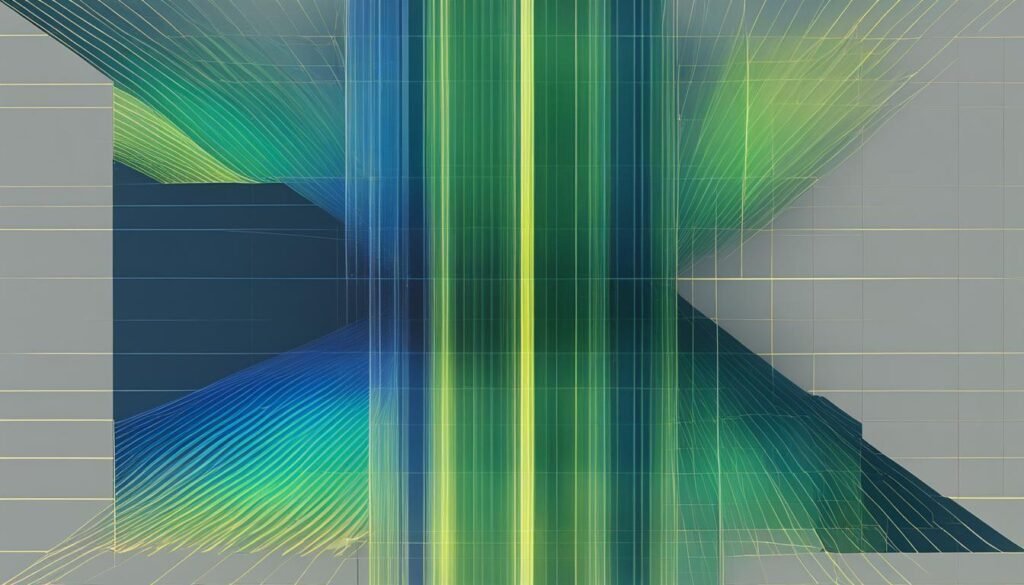Contents
Beam quality is a crucial aspect of laser performance and quality assessment. By understanding how to measure beam quality and ellipticity, we can gain valuable insights into laser behavior and optimize its performance. This article will explore the techniques and methods used to assess beam quality and measure ellipticity in laser beams.
When evaluating beam quality, the M2 factor is commonly used. This factor compares the true shape of the beam to an ideal Gaussian beam. It takes into account the beam waist, divergence angle, and lasing wavelength. A low M2 factor indicates a tight focus and efficient power utilization. Another metric, the beam parameter product (BPP), is calculated by multiplying the beam radius and divergence angle. Additionally, the power in the bucket (PIB) measurement quantifies how much laser power is integrated over a specific spot on the material surface.
Elliptical beams, which can have larger focused spot sizes than circular beams, are also commonly encountered. To compare the real performance of an optical system to an ideal one, the Strehl ratio is used.
Key Takeaways:
- Beam quality is crucial for evaluating laser performance and quality.
- The M2 factor measures beam quality by comparing the beam shape to an ideal Gaussian beam.
- The beam parameter product (BPP) and power in the bucket (PIB) are additional metrics used for beam quality assessment.
- Elliptical beams can have larger focused spot sizes than circular beams.
- The Strehl ratio compares the real performance of an optical system to an ideal one.
Techniques for Measuring Beam Quality and Ellipticity
Accurate measurement of beam quality and ellipticity is essential for evaluating the performance of laser systems and optimizing their efficiency. Several techniques are available to determine beam parameters and assess beam quality. The ISO Standard 11146 provides guidelines for measuring beam widths, divergence angles, and beam propagation ratios, ensuring standardized and consistent measurements across different systems.
To calculate the M2 factor, which is widely used to quantify beam quality, equations incorporating the beam waist, divergence angle, and wavelength are employed. Multiple measurements at different planes are necessary to accurately determine the M2 factor. Scanning slit profilers and CCD cameras are commonly used to measure beam width and overall beam shape. These instruments provide one-dimensional or two-dimensional profiles of the laser beam, enabling detailed analysis and characterization.
In addition to the M2 factor, other metrics such as the M-Squared parameter can be measured to assess beam quality. Cameras or scanning slits can be utilized to measure the M-Squared parameter, providing further insights into the laser beam’s performance. Circularization techniques, such as the use of cylindrical lenses, anamorphic prism pairs, and spatial filters, can be employed to convert elliptical beams into circular beams, improving beam quality and facilitating more uniform power distribution.
To accurately evaluate the ellipticity of a laser beam, it is important to consider factors such as beam width, divergence angle, and beam shape. By combining various measurement techniques and utilizing appropriate instrumentation, accurate assessment of beam quality and ellipticity can be achieved, enabling effective optimization of laser systems in various applications.
| Technique | Measurement |
|---|---|
| ISO Standard 11146 | Beam widths, divergence angles, beam propagation ratios |
| M2 factor calculation | Equations incorporating beam waist, divergence angle, and wavelength |
| Scanning slit profilers and CCD cameras | One-dimensional or two-dimensional profiles of beam width and shape |
| M-Squared measurement | Cameras or scanning slits for assessing beam quality |
| Circularization techniques | Cylindrical lenses, anamorphic prism pairs, and spatial filters |
Conclusion
Measuring the optical beam quality and evaluating its characteristics is crucial for understanding the performance of a laser. By assessing parameters like the M2 factor, beam parameter product, and power in the bucket, valuable insights into beam quality and radiance can be gained. These metrics provide a comprehensive understanding of the laser beam’s focus, efficiency, and power utilization.
To enhance the performance of an elliptical beam, circularization techniques can be employed. These techniques, such as the use of cylindrical lenses, anamorphic prism pairs, or spatial filters, enable the transformation of elliptical beams into circular beams, maximizing their effectiveness in various applications.
Accurate evaluation and analysis of beam quality and ellipticity are essential for optimizing laser performance in materials processing and laser systems. It is recommended to consult with experts and utilize appropriate measurement instruments to ensure precise measurements and reliable beam quality analysis. By doing so, one can identify areas for improvement and make informed decisions to enhance laser performance in different applications.



